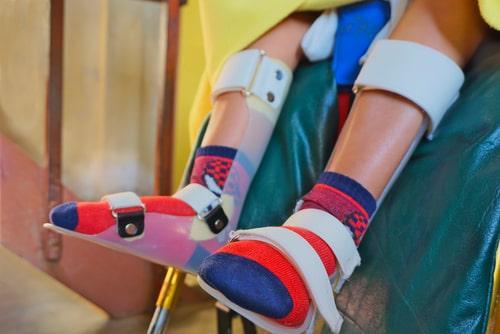Chicago, IL 60601
FREE CONSULTATIONS 312-462-4200
TOLL FREE 833-462-4200
What if My Child With Cerebral Palsy Does Not Want to Wear Leg Braces?
 Childbirth can be a beautiful experience, but in some cases, a mother and child may suffer complications. Cerebral palsy (CP) refers to a group of developmental disorders caused by abnormal brain development or damage to a developing brain. This can occur if the baby does not get enough oxygen during delivery. Considered a chronic disability, CP impacts a person’s ability to control his or her muscles. In addition, depending on the severity, CP may affect vision, hearing, speech, and intellectual ability.
Childbirth can be a beautiful experience, but in some cases, a mother and child may suffer complications. Cerebral palsy (CP) refers to a group of developmental disorders caused by abnormal brain development or damage to a developing brain. This can occur if the baby does not get enough oxygen during delivery. Considered a chronic disability, CP impacts a person’s ability to control his or her muscles. In addition, depending on the severity, CP may affect vision, hearing, speech, and intellectual ability.
Affecting approximately 1 in 323 children in the United States, CP is the most common motor disability in childhood. For many children with CP, wearing specially fitted braces on their feet and legs can enhance their quality of life by allowing them to stand and walk. However, it can be difficult to adjust to wearing these devices on a daily basis.
Orthotic Devices Increase Mobility
For individuals with CP, the strength and stability of their body is of primary concern. The more stable a body is, the better someone can move about and complete everyday tasks. Orthotic devices can help build stability while increasing strength, balance, and independence. The purpose of orthotics is to use devices that can help a child maintain a certain level of mobility, or correct physical issues that are preventing the child from being fully mobile.
Orthotics may consist of inserts and braces that are fitted to address a child’s specific needs. For example, they may be designed to relieve several symptoms of CP, including but not limited to the following conditions:
- Knee or hip subluxation
- Dislocation
- Spastic movement
- Drop-foot
To properly fit a set of orthotics, a child must undergo a complete physical assessment. In some cases, the braces may go on the foot and the entire leg. Some may be temporary if a child outgrows them, at which time new braces may be fitted. Regardless, orthotics can provide alignment and stability for young people so they can move and be active.
Comfort Is Key
Orthotic devices can be rigid or soft in material. They are often made from different materials, including:
- Metal
- Leather
- Plastic
- Rubber
Even when orthotics or braces are properly fitted, a child may be resentful about having to wear one. If a child has to wear them constantly, it can be uncomfortable after awhile. Parents should stress the importance of how this can help them in the long term. Other steps to take include:
- Follow the maintenance routine for cleaning, care and storage.
- Periodically inspect the brace for cracks, tears, or undue wear.
- Look for parts that may be damaged and need replacement.
- Try different types of clothing to increase comfort between the skin and the brace.
Contact a Cook County Birth Injury Lawyer
Cerebral palsy can be a lifelong condition that requires long-term care. If your child has a disability that was caused by a birth injury, you may be entitled to compensation if it was the result of medical negligence. At the Birth Injury Law Alliance, we understand the sensitive nature when dealing with these types of cases. We are committed to helping you navigate the legal steps for seeking financial relief that will go toward meeting your child’s daily needs. To learn more and to arrange a free consultation, call our knowledgeable and dedicated Chicago medical malpractice attorneys at 312-462-4200 today.
Source:
https://kidshealth.org/en/teens/story-cerebral-palsy.html





